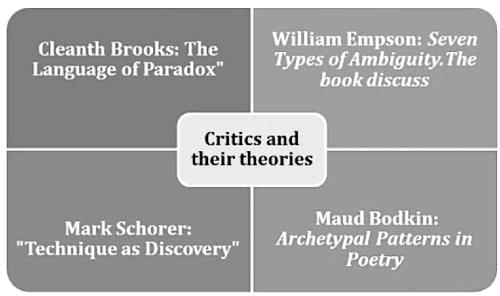UGC NET Paper 2 English Mock Test - 3 - UGC NET MCQ
30 Questions MCQ Test UGC NET Mock Test Series 2025 - UGC NET Paper 2 English Mock Test - 3
In Kamala Das's poem "The Old Playhouse," what significant literary device is employed to convey the speaker's emotions and experiences?
In which Tennessee Williams play does the character of Laura Wingfield appear?
Who is the author of the play The Browning Version?
In M.H. Abrams's book The Mirror and the Lamp, the "mirror" represents:
Find the chronological order in which the following feminist literary criticism works came into being:
A. Wollstonecraft's A Vindication of the Rights of Woman
B. Gilman's Herland
C. Woolf's A Room of One's Own
D. Showalter's A Literature of Their Own
E. Gilbert and Gubar's The Madwoman in the Attic
Choose the correct answer from the options given below:
Which of the following was not a dialect of Old English?
In “Memorial Verses” Matthew Arnold pays tribute to three great poets. Who are they?
In the mechanical drill method of second language acquisition:
(a) The learner has the freedom to choose from many responses.
(b) The learner’s response is totally controlled.
(c) Comprehension of the item by the learner is not required.
(d) Comprehension of the item by the learner is obligatory.
The right combination according to the code is:
The Grammar-Translation Method in English Language Teaching stresses on
Which bird was killed in ''The Rime of the Ancient Mariner''?
Which of the following is not a statement given by Wordsworth for Milton ?
Blow, blow, thou winter wind, / Thou art not so unkind / As mans ingratitude; These lines are from :
Match the items in List – I with items in List – II according to the code given be

“My lute, be as thou wert when thou didst grow
With thy green mother in some shady groove”
– William Drummond
The above quote is an example of ________.
Why does Lovewit in Ben Jonson’s play The Alchemist leave his house, setting the stage for his servant Face, alongwith Subtle, a fake alchemist to fleece people?
|
92 docs|125 tests
|















